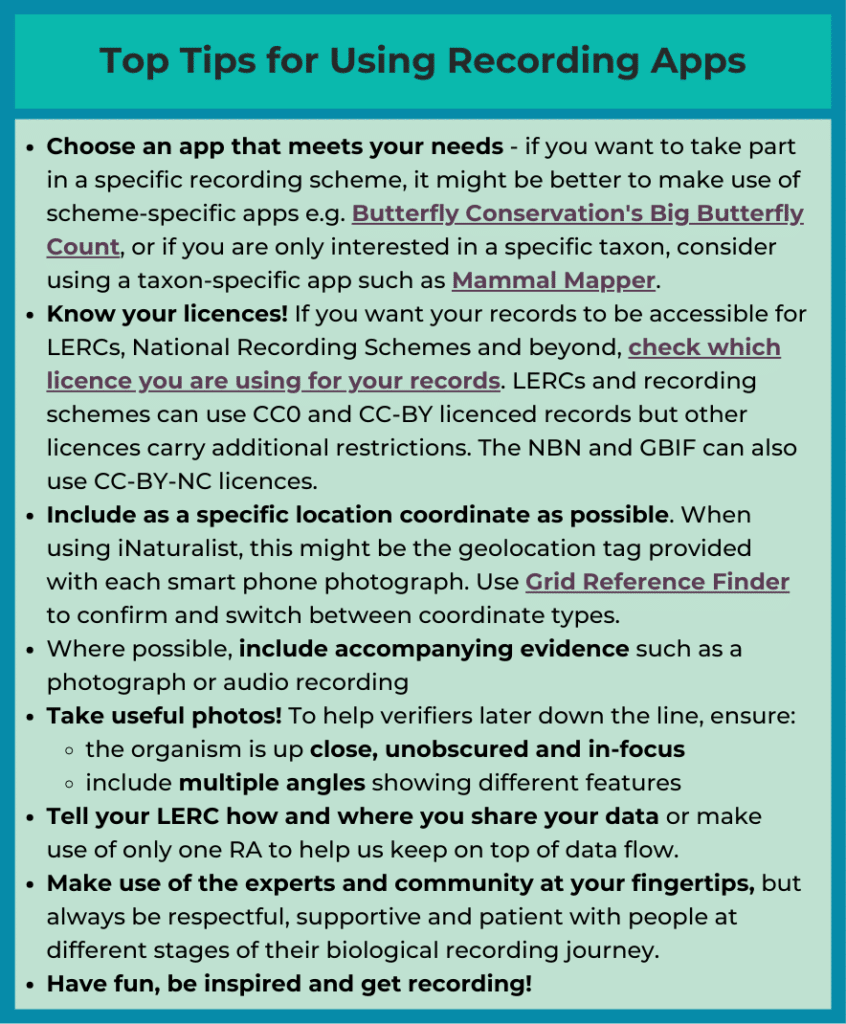Today I bring you the first in a series of GiGLer articles exploring the myriad of recording apps (RAs) available to novice and expert species recorders. GiGL is regularly asked about how we configure data from RAs within our database and so this first instalment introduces recording apps, their design, use, and importance to London’s Biological Recording Community. As an avid iNaturalist user I can happily extol the virtues of RAs and as a member of GiGL’s Community Team, I understand the complexities involved in incorporating Community Science-generated data into LERC systems. By the end of the series, I hope to have outlined the general discussion around RAs, which RAs we access and why, as well as provide an over-view of some of our favourites.
With the global proliferation of smartphones, RAs, have become a vital tool of those intrigued by nature. When linked to more conventional recording resources, RAs offer easy exposure to the wonder and complexity of nature, as well as access to the experts who can take advantage of the wealth of new data flowing around the world. Within this short series, we will explore the general principles, benefits, and issues around the use of RAs including iRecord, iNaturalist, Mammal Mapper, INNS and more, as well as how these new data streams complement existing biological recording infrastructure.
Recording App Design:
Fundamentally, RAs were designed to increase access to the tools required for improving the flow of good quality data from novice and veteran recorders alike to those using the data – be that Local Environmental Record Centres (LERCs), National Recording Schemes & Societies (NRSS), independent researchers, conservation practitioners or site managers. The aim is not to replace the work of LERCs or NRSS but to complement the established infrastructure. By directly linking recorders to local, national and global community science initiatives, RAs can simplify large-scale of data flow across the world. The main web-based framework on which most RAs we will discuss are based, is the open-source software Indicia. Developed and maintained by the Biological Records Centre (BRC, supported by the NERC-funded UKCEH and the statutory body JNCC) and Biodiverse IT, the Indicia framework provides the ‘ready made components required to build online recording websites’. The ease with which Indicia enables new recording programmes to establish is shown by the expansion of taxon-specific recording apps. The interoperability of these systems also helps records and data to flow between systems, in theory simplifying incorporation of records by organisations such as LERCs. iRecord was the first such platform built around the Indicia framework and it has captured the hearts of recorders everywhere.
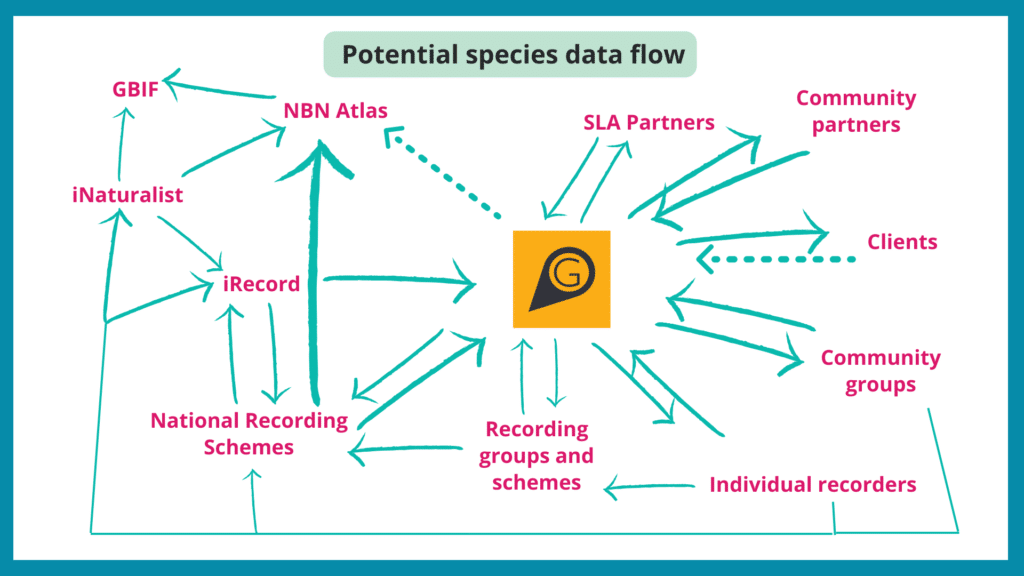
Helping to democratise biological recording:
Traditionally, biological recording was limited to trained experts or hobbyists with abundant time, resulting in gaps in our understanding of biodiversity due to thinly spread resources and capacity, limited to specific areas and taxa. With the advent of RAs and software, not only has a wealth of natural and taxonomic knowledge opened to new people, but also a whole new community.
The portability of smartphones and integration with high-res cameras, geolocation features and RAs, allows for the easy fusion of recording with pre-existing hobbies[VK1] like photography, gardening or even dog walking (read last month’s GiGLer on Nature Photography here). Building into hobbies with broader appeal has the potential to help democratise and decolonise biological recording and science in general.
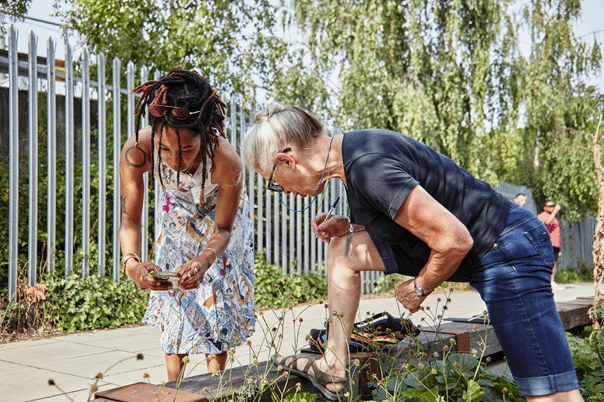
RAs provide help to reduce the learning gap when beginning with biological recording. Previously, ecological knowledge was learned from another recorder while out in the field or from complex biological keys and lists, posing huge hurdles geographically and for non-traditional learners. With knowledge at your fingertips, anyone outdoors can learn more about their local patch and engage with their environment in a totally new way. Personally, I have gotten addicted to understanding, naming, documenting and questioning what I see around me along the Grand Union Canal using iNaturalist – my ‘local patch’ as it were. Being able to review all my observations gives me a sense of pride and allows me to also track my progression of understanding, as well as serving as a useful resource to return to when I can’t quite remember the name of some strange leafy thing growing out of a lock.
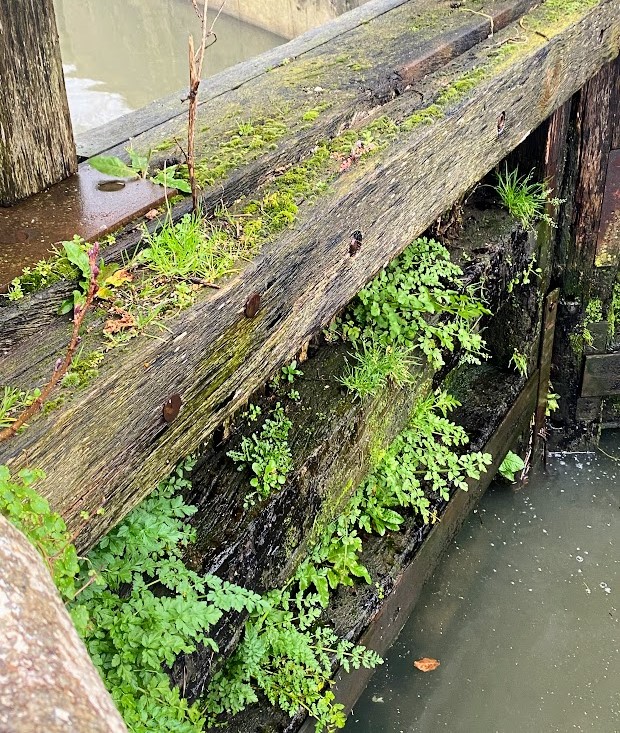
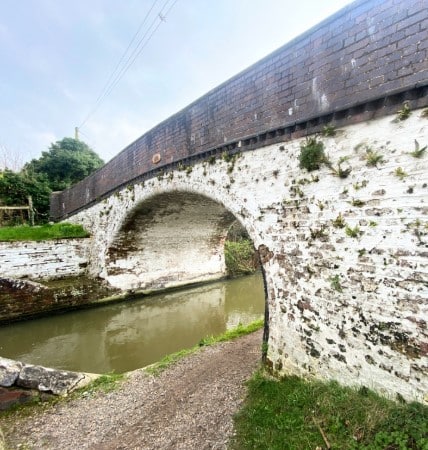
iNaturalist has begun to help me understand the intriguing array of marginal plants that miraculously find a home on the undisturbed lower gates of a lock or the hardy Hart’s tongue ferns creeping out from the shade of a bridge. Photos by Victoria Kleanthous.
With a simple but effective user-interface, supplemented by the direct link to experts providing feedback and the ability to track the verification status of records, the gamified version of RAs (iNaturalist specifically) encourages me and many others. Being able to contextualise records of others nearby also helps to provide a sense of the scale of the Community Science Community and its power to tease out important trends from local data. The use of RAs by many recording events and schemes further highlights this and enables a direct and immediate contribution to global events like City Nature Challenge. Use of RAs or bespoke recording forms (check out GiGL’s bespoke recording forms for the London Wildlife Trust) enables organisers to evaluate event engagement and can allow direct sharing of results with contributors – a quick and important way of showing gratitude to Citizen Scientists that is often overlooked.
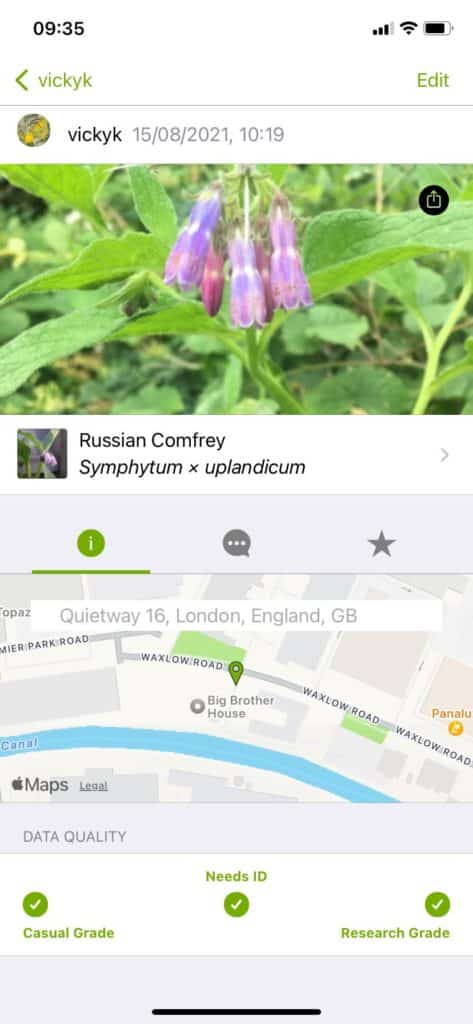
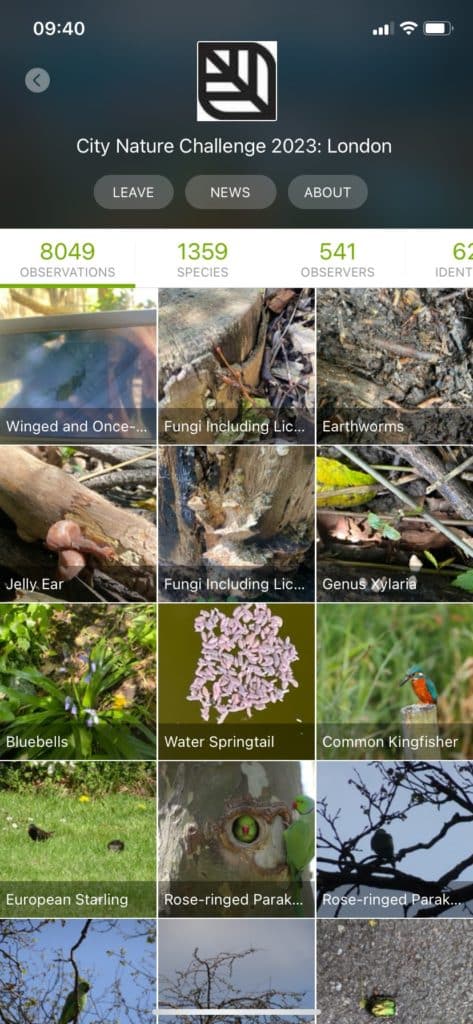
Screenshots showing the interface of iNaturalist from both my own observations and a selection of those from last year’s City Nature Challenge – let’s beat last year’s 8049 observations this year!
With users able to engage directly with taxonomic specialists and county recorders, RAs also promote the connection between beginners and experts, laying bare the start of the path from observable phenomenon to scientific theory. Dipping into any iNaturalist or iRecord forum, one can see first-hand the type of discussion critical to the evolution of the collective knowledge. And more importantly, having an accessible place for discussion is a necessity that RAs provide and promote. Demystifying this process can help to encourage minority groups – people of colour, those from lower socio-economic backgrounds, even just young people living in large cities disconnected from nature – to pursue hobbies and professions within the ecological sphere.
To combat both the ecological and climate crises as well as the loss of ecological and taxonomic specialists, we need more recruits than ever! The use of RAs must be promoted in combination with traditional recording techniques and access to real-world training. This is why GiGL will trumpet the work of groups like the Biological Recording Company and the Field Studies Council at every opportunity, who offer follow-up training opportunities for to retain people in the sector
With careful planning, RAs could even help to inspire the new generation of verifiers, the individuals crucial to all recording, regardless of format. When discussing RAs, we must acknowledge the significant debt to verifiers and experts who not only tirelessly maintain the integrity of species databases through careful record examination, but also without whose knowledge informing recording keys, research papers, etc, there would be no RAs at all.
Identification and Verification: The good and the difficult
Verification processes work differently depending on the app: iRecord records are subject to basic validity checks based around species ranges and seasonality to assess identifications and are often checked by county verifiers. iNaturalist utilises AI and a crowd-sourcing approach to suggest an ID. All LERCs make use of the UK Species Inventory maintained by the Natural History Museum so that only species IDs conforming to nationally agreed standards for record inclusion make it into LERC databases. RAs also make use of dictionaries and features like taxon distribution maps, help to limit erroneous ID suggestions, but the global range of some RAs means that surprising IDs are still available for users to select. Where before, verifiers could choose to only accept records from known and trusted individuals, there is a now a new abundance of available records donated behind obscure usernames and online anonymity. However, apps can give verifiers direct contact with a recorder, as well as their recording history. This can help to confirm new sightings, especially with the arrival of new species to different parts of the UK, as well as assisting in ‘verifying the recorder’ – a process necessitated by the proliferation of new recorders. But this useful feature belies an additional layer of work and obligation to already over-stretched verifiers, who are also getting to grips with more ‘big data’ like bioacoustics and eDNA records in need of verification.
Recording Apps and Data Flow:
RAs were also developed with the FAIR data principles in mind – centring transparent and reliable record collation, validation, verification and dissemination. As such, GiGL and other LERCs obtain appropriately-licenced and validated data from iRecord and its feeder apps for integration within our database, enabling use for our Partner and Community Network as well as use by NRSS to understand national ecological trends.

A record with a CC0 1.0 licence means that there is no copyright associated with the record, making them most useful to LERCs and NSRS. Taken from Creative Commons website.
The interoperability of RAs with pre-existing platforms used by LERCs, the NBN Atlas and GBIF ensures the easy integration of data and means that recorders need only share their data through a single platform. Here at GiGL, we strongly encourage the submission of records through iRecord, but request that regardless of how you choose to submit records, you do so through only a single platform, or at least inform us of where your records go to help us keep track of London Data Flow.
Hopefully, this short introduction has made a convincing case for the use, incorporation of RAs as a tool for biological recording. Stay tuned for more features on other RAs and associated commentary. But most importantly get out and give the apps a go!
